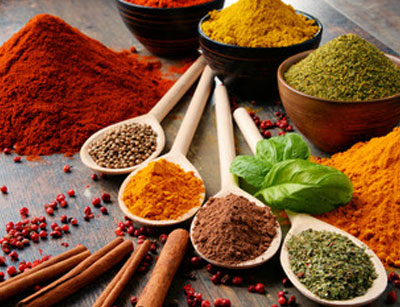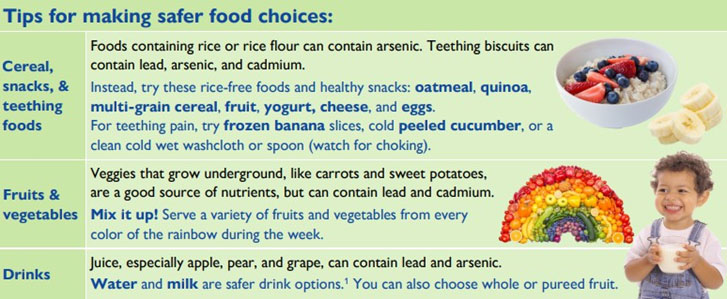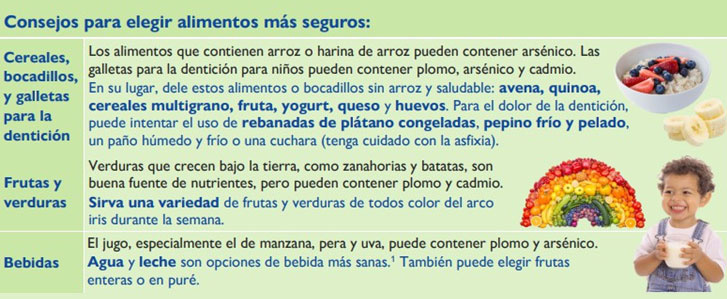
Lead in food originates from the environment, influenced by historical lead use. Despite lead phase-outs, it persists in some products. The FDA regulates lead levels in food to mitigate health risks. Prevention is challenging, but reducing lead in food is possible through agricultural and manufacturing adjustments. Manufacturers must minimize chemical hazards as required by the FDA (Food and Drug Administration, 3/6/24).
To minimize exposure to lead through cooking spices and food source:
Lead in Baby Food
Recent congressional reports found heavy metals, including lead, arsenic, cadmium, and mercury, in baby foods and baby juices. Heavy metals are especially dangerous for young children. This news can leave parents with a lot of questions. Here is more information and tips for parents to keep their children safe.
What can I do?
- Feed your child healthy meals and snacks and not too much of one thing.
- Limit higher risk foods for heavy metal exposure and make safer choices (see list below).
- Wash hands often, especially before eating. Use lead-safe dishware and cold tap water for drinking, cooking, and baby formula.
- If you think your child may have been exposed to lead, ask your child’s doctor about a blood lead test.
Why is this important?
- There is no known safe level of lead in the body, especially for children.
- Lead can make it hard for children to learn, pay attention, and behave.
- Lead adds up in the body over time, so it is important to reduce lead exposure from all sources.


Chapulines and their Lead Content
Chapulines, dried grasshoppers, are a favored snack in certain regions of Mexico, commonly seasoned with salt, lime, and chili. Despite being a significant cultural food and protein source, some chapulines available in Mexico and California may contain elevated lead levels. Lead found in chapulines or other sources can lead to health issues, particularly for children and expectant individuals. Lead exposure can hinder children's learning abilities, focus, and academic performance.
Lead Contamination in Chapulines
Lead enters chapulines through absorption from the environment, such as lead in the soil and leaves consumed by the grasshoppers. Additionally, lead can contaminate chapulines during the drying or seasoning stages. If chapulines are cooked or stored in pottery containing lead, the lead from the pottery can leach into the chapulines.
Why is this an issue?
Having any level of lead in the body is unsafe, and individuals with lead poisoning may not display symptoms. Lead accumulates in the body gradually, making consuming chapulines contaminated with lead risky.
How can I ensure my family's safety?
To keep your family safe, refrain from consuming chapulines that were cooked or stored in glazed clay pottery (such as chilmolera or molcajete) or sourced from areas with lead contamination. Instead, opt for alternative protein-rich snacks like roasted nuts or peanut butter paired with celery sticks. Consult your child's physician to arrange a blood lead test.